Most manufacturers think marketing is confusing, expensive, and, honestly… unnecessary. And marketing is one of those things only big companies with big budgets can afford.
Well, that’s not true.
74% of manufacturers now report having a formal marketing strategy. In fact, here’s what a senior industrial analyst said:

*Industry 4.0 refers to the digital transformation of the manufacturing industry that integrates physical operations with digital, data-driven systems to improve efficiency, flexibility, and decision-making.
By the end of this guide, you’ll understand what marketing really means, why manufacturers can’t afford to ignore it anymore, and the exact steps to start marketing to get more sales and generate revenue — even if you have zero experience.
What is Marketing for Manufacturers?
Marketing for manufacturers is a process of creating a plan or a strategy that helps the right buyers discover your industrial business and understand why your product is a good fit for them. It ensures your company exists, understands what you make, and trusts you enough to reach out.
It includes identifying your ideal customers, explaining your products clearly, showing your strengths, and promoting your capabilities through the multiple channels your buyers actually use — both online and offline.
And here’s where most manufacturers miss something important: marketing and sales aren’t separate entities. They are correlated.
Why Sales Needs Marketing (and Vice Versa)
Sales teams bring in customers, but marketing makes their job easier. Instead of relying solely on cold calls, trade shows, or chance referrals, marketing helps attract people who are already interested — like someone filling out a form on your website, messaging you on LinkedIn, or finding your brochure at a trade show.
When sales and marketing work together, your team gets fewer “Who are you?” conversations and more “We’ve heard of you, can we talk?” leads.
This saves time, expands your reach, and creates a more predictable flow of customers.
Did you know?

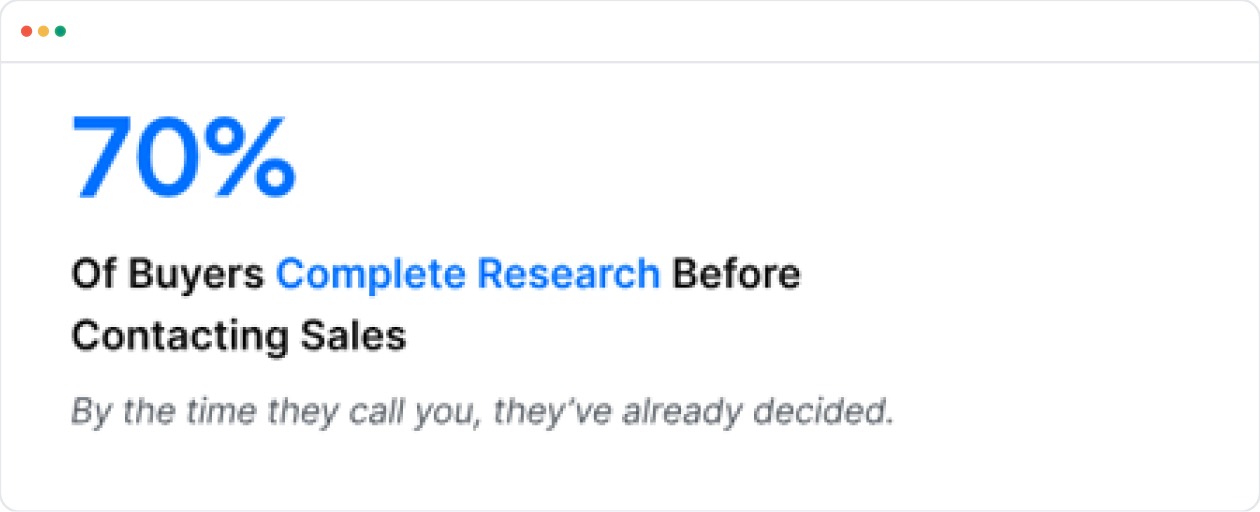
This shows how marketing prepares the customer to buy; sales closes the deal.
How Consumer Marketing (B2C) Is Different From B2B Manufacturing Marketing
Often, manufacturers who start thinking about marketing assume that B2C and B2B marketing are similar. Whereas B2C marketing and B2B manufacturing marketing are two entirely different approaches.
That’s why manufacturing marketing has always focused on clarity, capability, and trust.
What are the Types of Marketing in Manufacturing?
Marketing falls into two broad buckets: digital and non-digital.
Digital marketing uses online channels like social media, search engines (Google, Bing, Safari, Yahoo), and email to reach buyers. Non-digital (or traditional) marketing relies on offline methods such as print ads, brochures, trade shows, or direct mail.
The key difference is in reach, cost, and measurability: digital lets you track exactly who sees your content, what they click, and how many turn into leads, often at a lower cost.
Non-digital marketing provides a tangible presence, such as seeing your booth at a trade show or receiving a brochure, helping you connect with buyers who aren’t active online.
Both matter because your buyers don’t stick to one channel — they research online, ask peers for recommendations, visit trade shows, and check your website before ever talking to sales.
A strong manufacturing marketing strategy blends both so you stay visible wherever your ideal customers look.
Now, answer these questions yourself:
- When was the last time a buyer found you without a cold call?
- If someone searched your product today on Google, would they land on your website or your competitor’s?
- Are your high-quality buyers even aware that you exist online?
This is why digital marketing complements non-digital marketing. Because you can see who’s visiting your website, which pages they care about, and how many turn into potential qualified sales. No guessing, no assumptions.
In fact, Forrester found that using digital marketing to nurture leads costs about one-third as much as traditional marketing methods and can boost manufacturing sales by up to 50%.
Some manufacturers have cut costs by roughly $20K by moving their marketing spend from traditional approaches to digital channels.
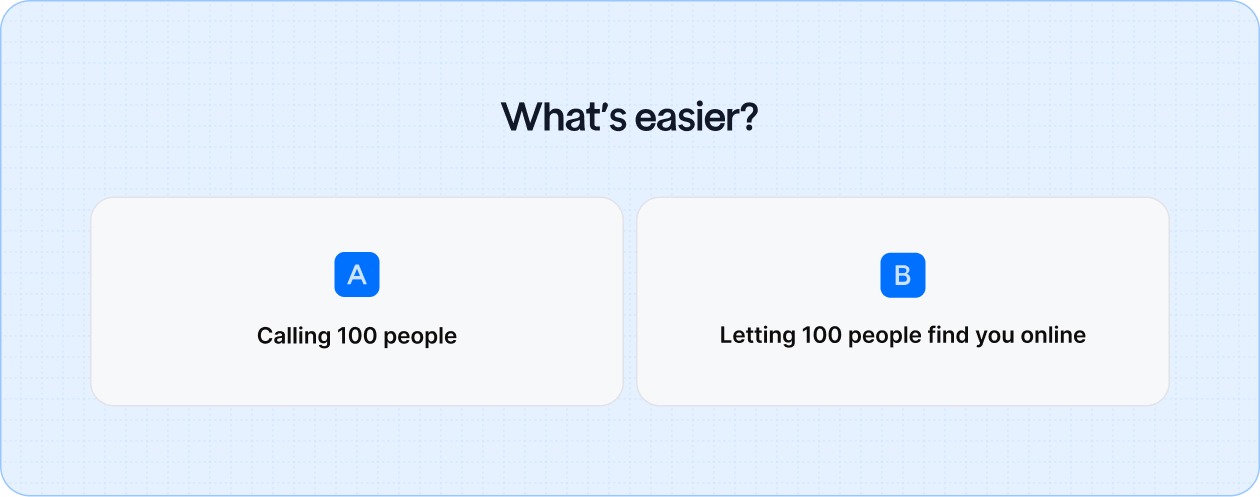
Most manufacturers are shifting to digital for this simple reason: it works.
And you don’t need a full marketing team to start. You can begin small, test one or two channels, and scale only when you see results.
Top Marketing Strategies for Manufacturers (Start Here)
There are multiple channels to build a strong manufacturing marketing strategy. Here are some results-oriented channels for you to begin with.
1. Content Marketing (Your Expertise, Published Simply)
Content is how your buyers understand what you make without talking to you. And, content marketing is a process of explaining your capabilities, processes, tolerances, materials, and applications.
These can mainly be through multiple digital platforms, like LinkedIn, Facebook, Reddit, Industrial forums, or, most importantly, your website (blogs, service pages, capability pages, case studies, e-books, whitepapers, etc.).
How to Start:
- Decide the purpose of your content: educate buyers, showcase capabilities, or support sales.
- Pick 2–3 content formats you can realistically maintain (case studies, capability pages, blogs, LinkedIn posts, videos).
- Build a simple content calendar — even one post every 2 weeks is enough.
- Align topics with what sales gets asked most often, so your content actually reduces workload.
Manufacturers win sales when they sell trust. Content helps them build it before the first call.
2. Trade Show & Expo Marketing (Old School but Still Powerful)
Still one of the best channels for manufacturers.
Trade shows help you meet engineers and procurement teams face-to-face. This is where you get real, unfiltered insights: what they’re struggling with, what budgets look like this year, and which suppliers they’re actively searching for.
How to Start:
- Pick 1–2 industry shows your real buyers attend (not generic expos).
- Bring a clear one-page capabilities sheet with specs, materials, tolerances, and industries served.
- Capture every RFQ or inquiry and log it in a simple CRM/Google Sheet so follow-ups never slip.
Trade shows turn months of cold outreach into 2 days of warm, high-intent conversations.
Suggested Read: 30 Definitive Ways to Capture Leads at Manufacturing Trade Shows
3. Search Engine Optimization (SEO)
Buyers search by part number, material, tolerance, and process, not generic marketing terms like “cutting-edge services, innovative engineering, end-to-end capabilities”, etc.
SEO makes your website visible when people search for the products you manufacture. This is mainly through targeted keywords that your buyers are looking for, and writing content (blogs, capability pages, etc) around those keywords on your website.
This helps your buyers and Google (search engines) understand what you do, so you show up when someone types what you make.
How to Start:
- List your core services and industries served. These become your core (website) pages.
- Ensure every page includes clear specs, materials, tolerances, FAQs, and process steps.
- Fix the technical basics: fast-loading website (under 3 seconds), mobile-friendly, no broken pages.
- Keep adding new pages over time instead of trying to “perfect” them upfront.
- Consider an SEO expert who can do all of these for you easily when you take care of your industrial floor.
SEO brings consistent, high-intent visitors who already know what they need. It can be overwhelming at first, but there are tons of beginner-friendly guides and tools that make it easier.
Read more: SEO for Manufacturers: A Complete Guide
4. Paid Search and PPC Marketing (Fast Visibility, Controlled Spend)
On average, SMBs invest 7X more in PPC than in SEO. PPC (Pay-Per-Click) or Paid Ads help manufacturing teams compete with bigger suppliers instantly. This has a significant impact on new line launches or major announcements.
How to Start:
- Identify 5–10 high-intent keywords related to your capabilities.
- Set a small monthly budget and test one campaign at a time.
- Write simple ad copy focused on capabilities, not clever wording.
- Track which keywords bring actual RFQs and shift the budget accordingly.
Paid search puts you in front of buyers now, while SEO builds long-term growth.
5. PR & Partnership Marketing for Manufacturers
PR and Partnership marketing is all about getting your brand in front of buyers through trusted third parties—suppliers, OEMs, distributors, directories, trade publications, and industry platforms where your buyers are already searching for vendors.
How to Start:
- Create co-branded capability sheets with suppliers or OEM partners.
- List your company on high-intent industry directories (engineering platforms, regional vendor lists).
- Share updates like certifications, machine upgrades, quality improvements, or sustainability efforts through trade media.
- Publish simple thought-leadership content: “How we machine X material,” “Common tolerance issues,” etc.
When credible platforms, partners, or publications talk about you, buyers take you more seriously—making it easier to win more sales, justify pricing, and build long-term relationships.
6. Email & Lead Marketing
Most manufacturers need a clean, reliable way to respond to inquiries quickly and keep the conversation moving.
Staying top-of-mind with prospects through timely, simple communication that guides them from initial inquiry → high-quality lead → confirmed order without delays or confusion.
How to Start:
- Set up an introductory auto-confirmation email so buyers know their inquiries have been received.
- Make a rule for a human reply within 12 hours—faster than 90% of your competitors.
- Send case studies, capability sheets, or sample work to build instant confidence.
Download Free Customizable Template PDF
In manufacturing, speed closes deals. Most suppliers lose opportunities not because of pricing, but because they respond too slowly or inconsistently.
However, most manufacturers ask us this question: how can we ensure that our marketing strategy is on point?
What are the Objectives of Manufacturing Marketing?
The following objectives turn marketing from “random promotion” into a predictable system that attracts the right buyers, builds trust, and helps manufacturers win more RFQs with less effort.
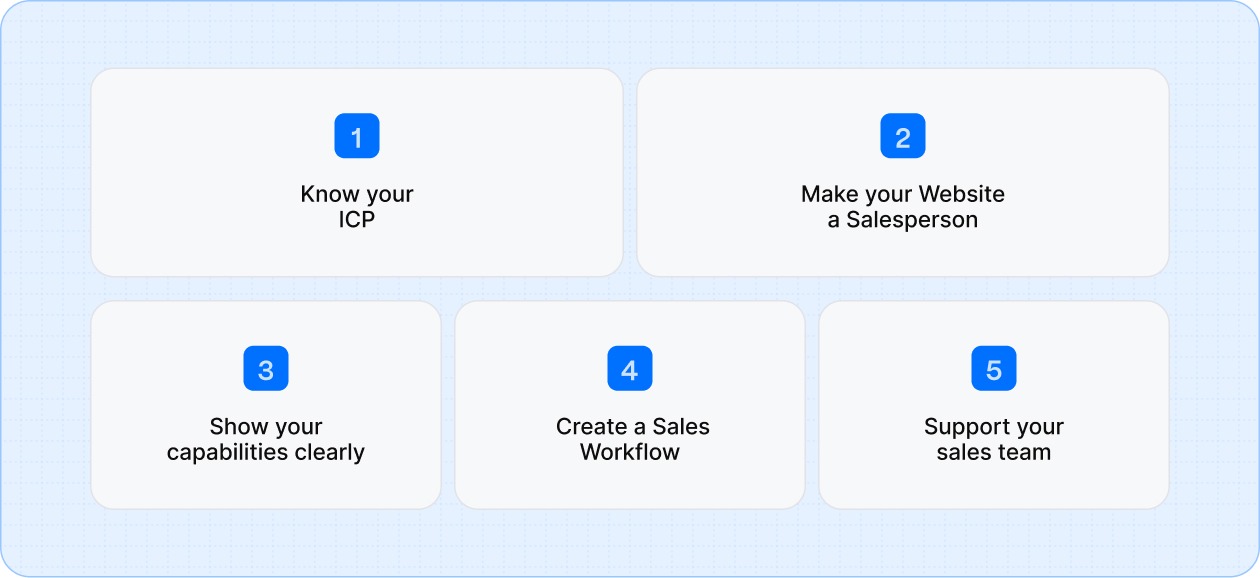
- Know Exactly Who Your Ideal Customer Profile Is (Your ICP): You can’t market to “everyone.” You need to know which industries, part specs, tolerances, volumes, and decision-makers are the best fit. This helps avoid wasting time on low-quality leads.
- Make Your Website Your Best Salesperson: Your website should clearly show what you make, how you make it, and why someone should trust you. Good web design simply means fewer questions, fewer back-and-forths, and more sales. Consider some of the manufacturing website design examples for the same.
- Show Your Capabilities Clearly & Confidently: Buyers want to know specifics: materials, tolerances, industries served, certifications, machines, and turnaround times. Clear capability communication cuts sales cycles in half.
- Create Predictable Sales Flow (Not Seasonal or Random): Marketing should help you avoid slow months. When done right, you know how many leads you can expect each week or month, providing stability for production planning and revenue.
- Support Your Sales Team With Better Leads: Sales teams shouldn’t waste time chasing poor-fit buyers. Good marketing gives them qualified leads who already know what they want, making every conversation more productive.
To add to this, here’s what a Reddit user said:

If you understand the objectives correctly, you are half the way there.
What is the Cost of Manufacturing Marketing in the US?
Marketing costs can vary widely depending on how you execute it and which channels you use. Let’s break it down simply so you can plan effectively.
Additional Marketing Expenses
If you plan to include PPC, social media marketing, or trade show participation, expect to allocate an additional 20–30% of your marketing budget. This is separate from content, SEO, or web design and is meant to amplify reach or drive specific campaigns for more revenue and growth.
The right approach depends on your company's size, budget, and goals. Small manufacturers can start small, measure results, and scale investments gradually, without committing to huge upfront costs.
Suggested Read: 15+ Manufacturing SEO Companies
Avoid These Manufacturing Marketing Mistakes Without Fail
It’s easy to stumble in ways that waste time, money, and energy. Here are the pitfalls most manufacturers fall into, and how you can avoid them.
- Trying to Do Everything at Once: Some companies jump on every channel—SEO, PPC, LinkedIn, emails, trade shows—at the same time. Nothing gets done well without a strategic plan. Focus on channels that actually reach your buyers first. Then, start building over it.
- Not Tracking What Works: If you’re not measuring clicks, inquiries, or leads, you’re flying blind. Simple tracking shows what’s actually generating interest, so you can spend your money wisely.
- Copying Others Blindly: Just because a competitor posts a certain way doesn’t mean it fits your products or buyers. Adapt strategies to your business and your buyers’ needs.
- Failing to Nurture Leads: Getting an inquiry is just the start. Many manufacturers lose deals by not following up consistently or giving buyers the info they need. Timely emails, calls, or capability sheets can turn a curious lead into a long-term order.
- Not Aligning Marketing with Sales: Marketing that doesn’t sync with your sales team creates confusion and missed opportunities. Ensure your campaigns, content, and messaging support the sales process from first contact to RFQ.
Wrapping Up
Marketing for manufacturers doesn’t have to be complicated or expensive. By understanding your buyers, using the right mix of digital and offline strategies, aligning marketing with sales, and consistently measuring results, even small and mid-sized manufacturers can generate leads, build trust, and grow revenue.
Start simple, focus on high-value actions, and scale your efforts as you see results—marketing becomes a predictable system for business growth rather than a guessing game.
Talk to an SEO expert to avoid wasting money on common mistakes and keep your focus on the shop floor.
















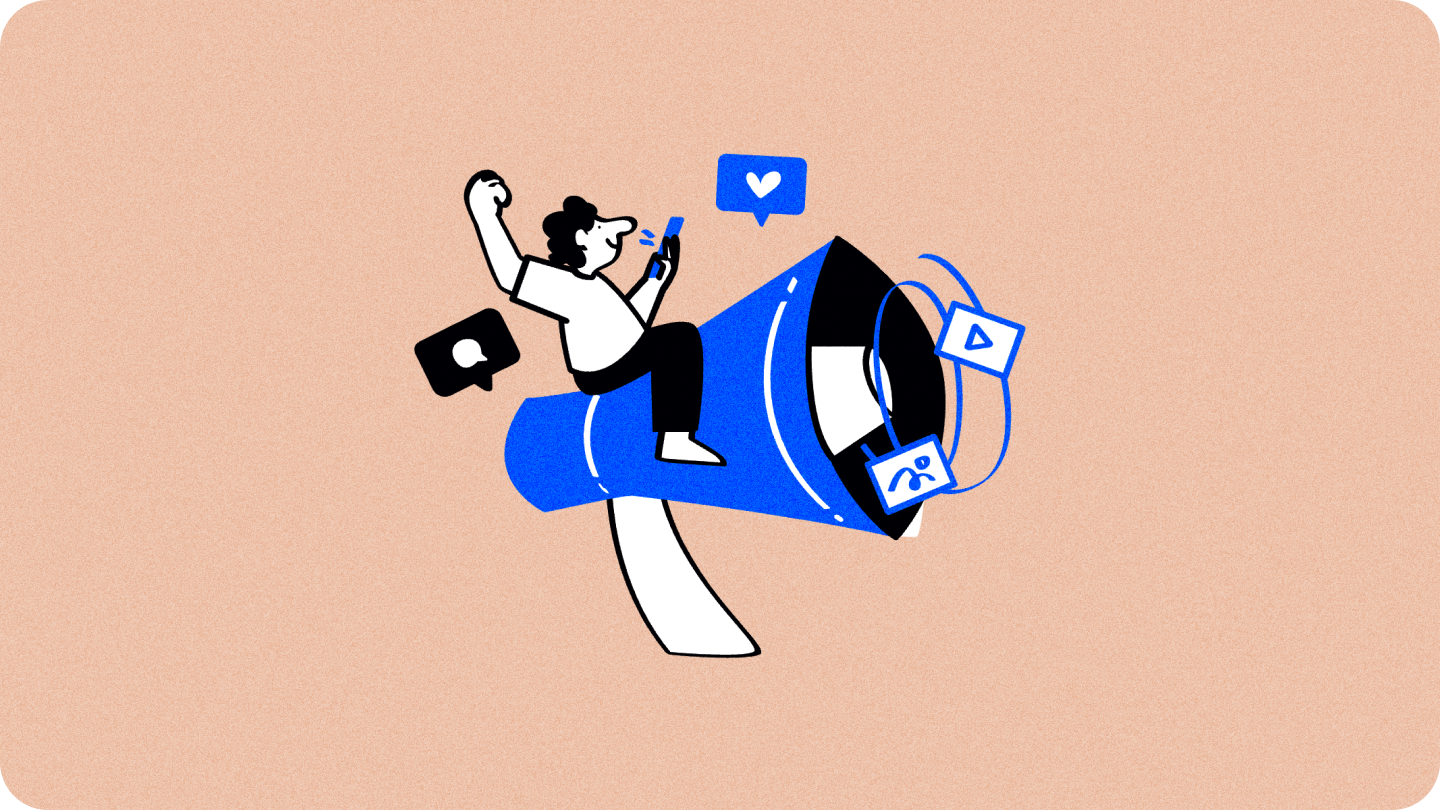




.webp)
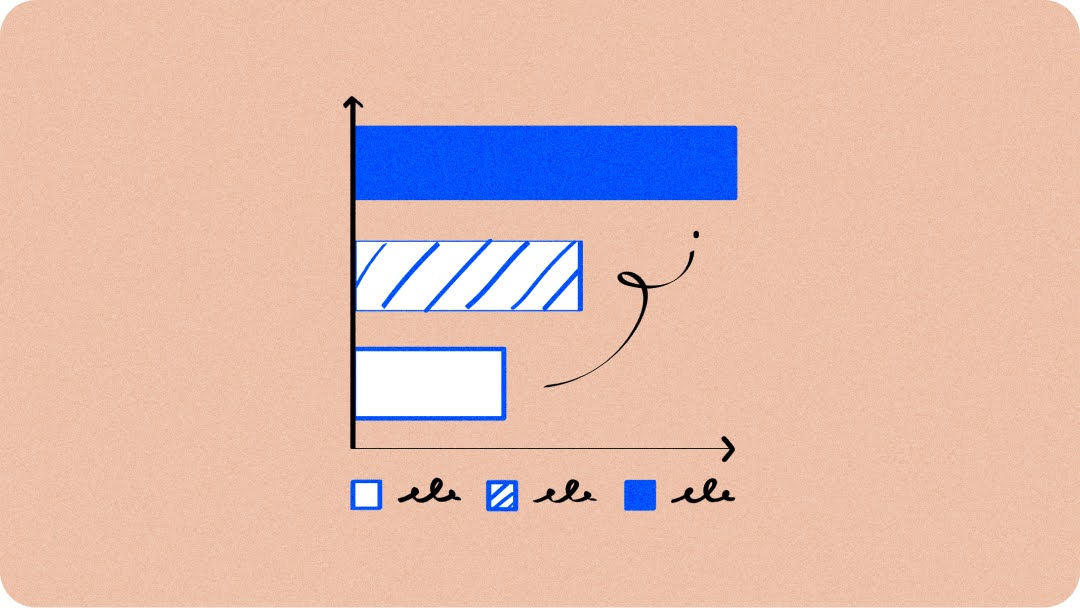

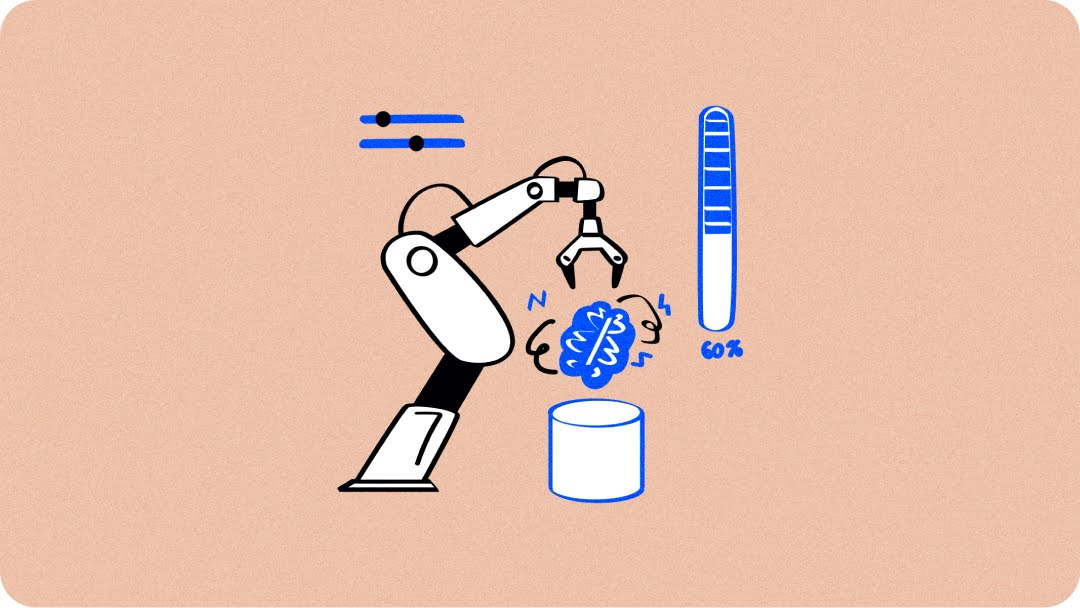





.webp)
.svg)


.svg)
.svg)
.svg)







.svg)